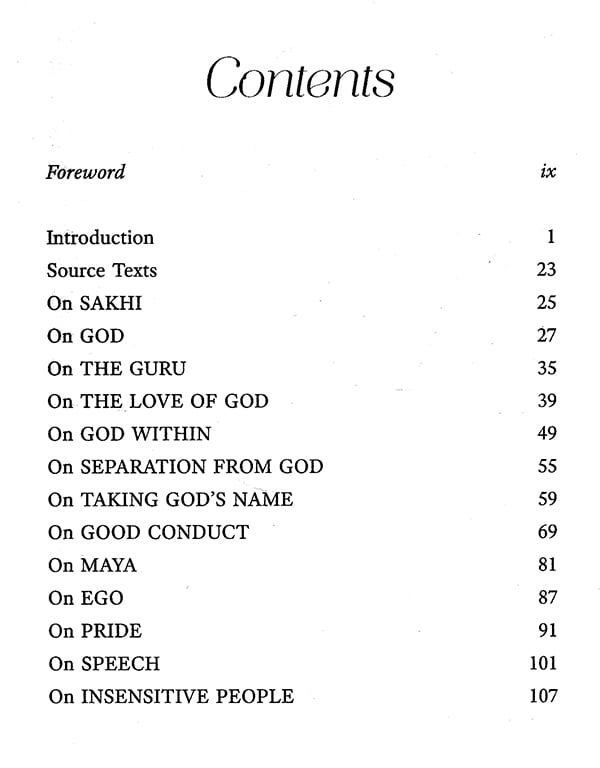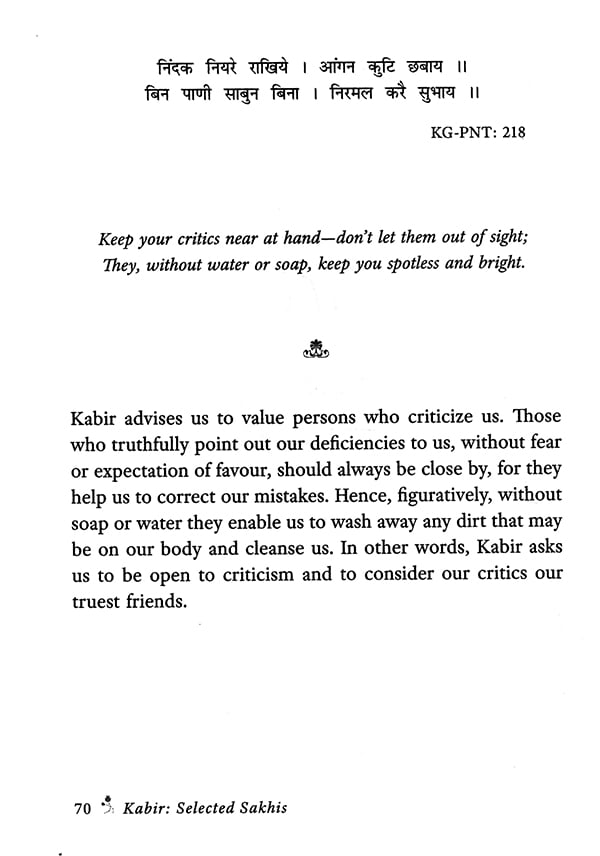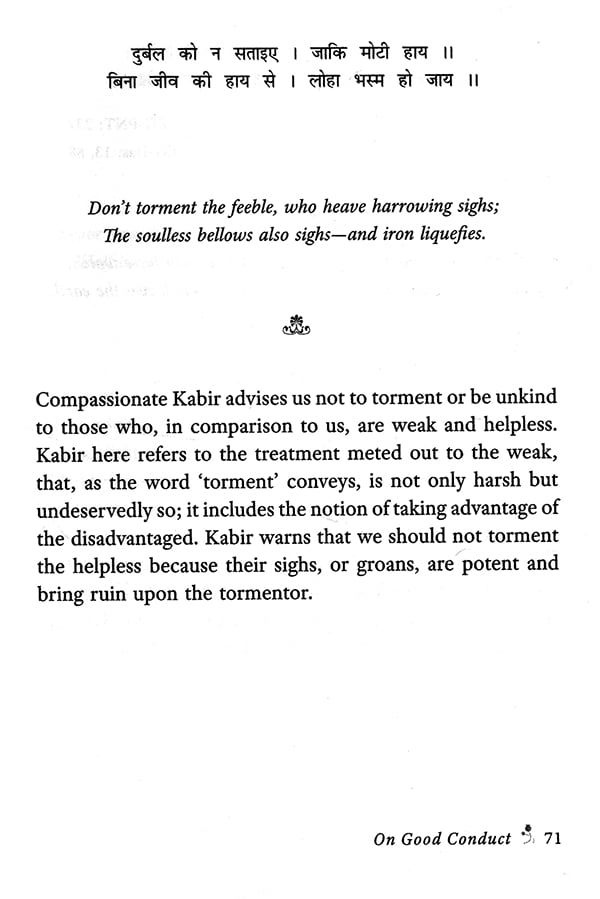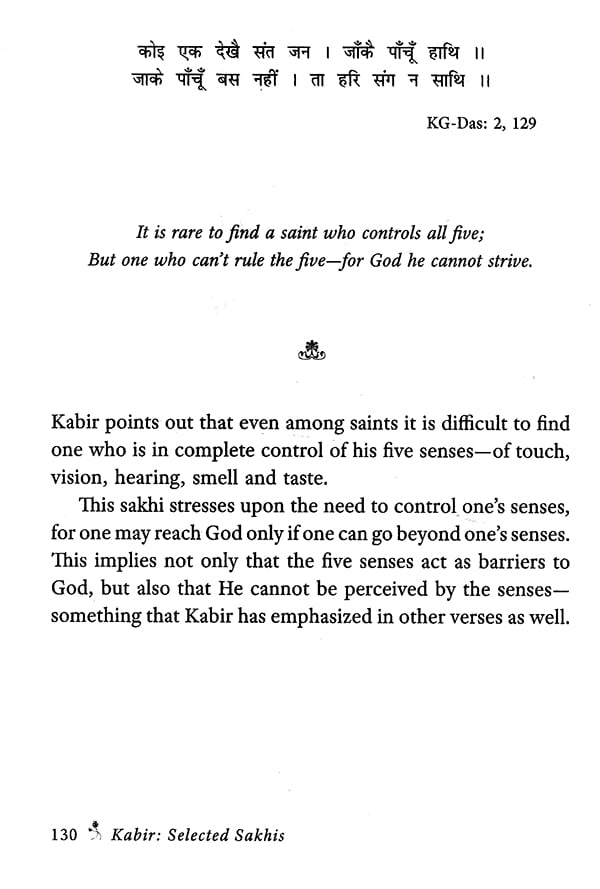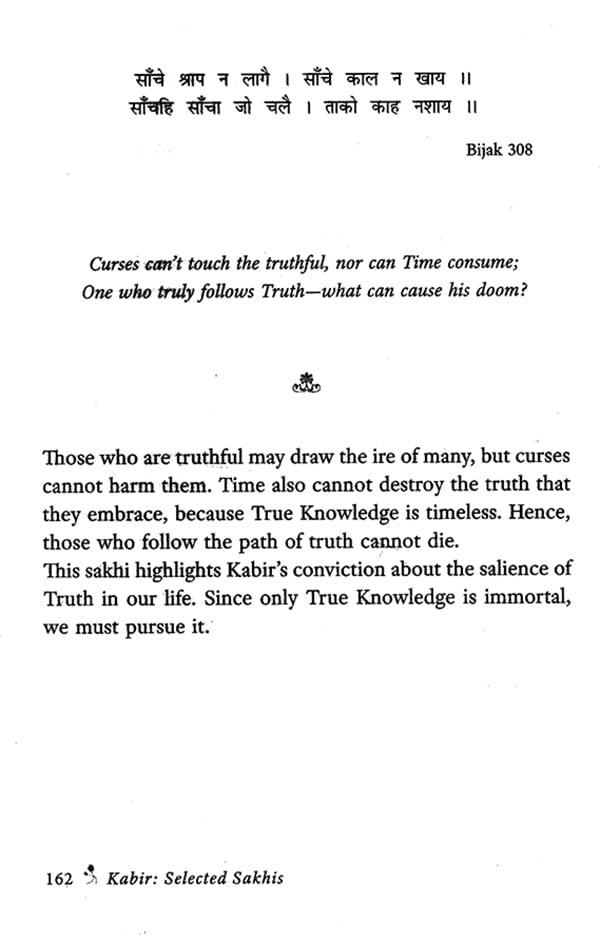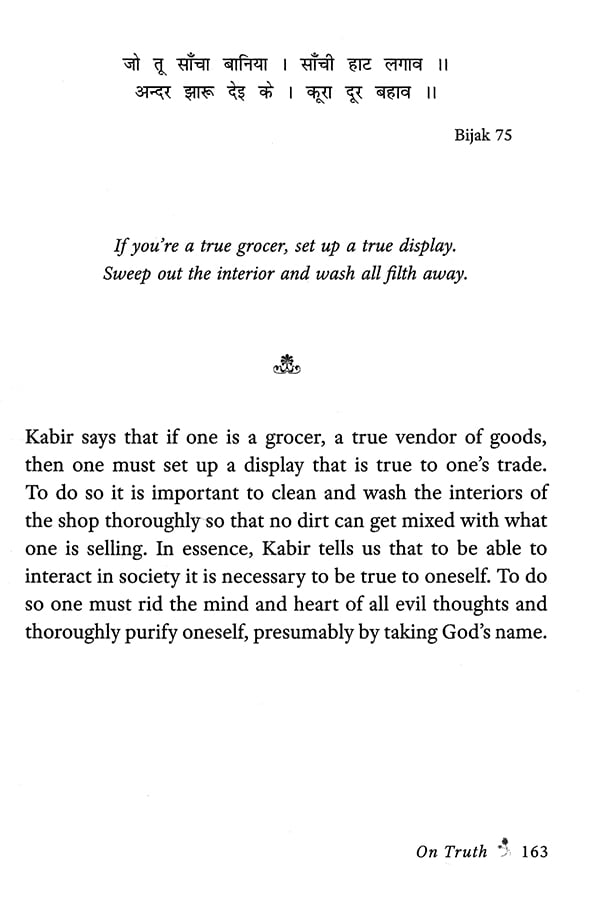
The Vision of Wisdom Kabir (Selected Sakhis)
Book Specification
| Item Code: | NAZ638 |
| Author: | Chandan Sinha |
| Publisher: | Rupa Publication Pvt. Ltd. |
| Language: | Hindi Text With English Translation |
| Edition: | 2022 |
| ISBN: | 9789389967739 |
| Pages: | 204 |
| Cover: | PAPERBACK |
| Other Details | 8.00 X 5.00 inch |
| Weight | 140 gm |
Book Description
It is my privilege to welcome readers to this strikingly original book. Nothing better attests the ongoing power of Kabir than the devotion of his translators—nothing except the desire of so many nameless later Hindi poets to add to the Kabir corpus they inherited. Did they actually intend to perform this work of addition as they composed Kabir couplets of their own, or was it those who heard such couplets who dignified them by remembering them as Kabir's? Whatever the answer in each individual case, there is a powerful aggregate result. When we hear Kabir, we're hearing a centuries-long conversation between poet and audience.
Until quite recently, the only fact about Kabir upon which scholars agreed was that he existed. All other details about his life were, and many even now are, disputed, surmised, speculated upon or woven into the gossamer of legend' or, worse, myth. Over the last three centuries various versions of the manner of his birth have been related"—normal, mysterious and miraculous. Whether his real name was Kabir or Kameer has also been disputed.' Modern scholarship continues to be roiled in the dispute over the dates of Kabir's birth and death. Consequently, estimates of his age vary from 50 to 120 years—as short a span as 1398-1448 or as long as 1398-1518.4 Jack Hawley thinks both are unlikely, arguing that Kabir probably lived in the sixteenth century and not the fifteenth.' Both Muslims and Hindus claim Kabir as their own.
For some time it was even argued that he had not one but two gurus (Keay 1931, 38). Purushottam Agrawal6 has tried to show that Kabir was Ramanand's disciple, a traditional claim, but has done so on the basis of a reconsideration of just what corpus of text we should regard as having been produced by Ramanand. Appreciating the revisionary stand that Agrawal's arguments present, Hawley nonetheless disagrees with the ultimate conclusion, namely, that Kabir and Ramanand were disciple and guru.' At least three memorial shrines marking the site of Kabir's death are located in places as diverse as Maghar in northern Uttar Pradesh, Chattisgarh and Puri in Odisha. The largely agreed-upon elements of Kabir's biography are few.
**Contents and Sample Pages**